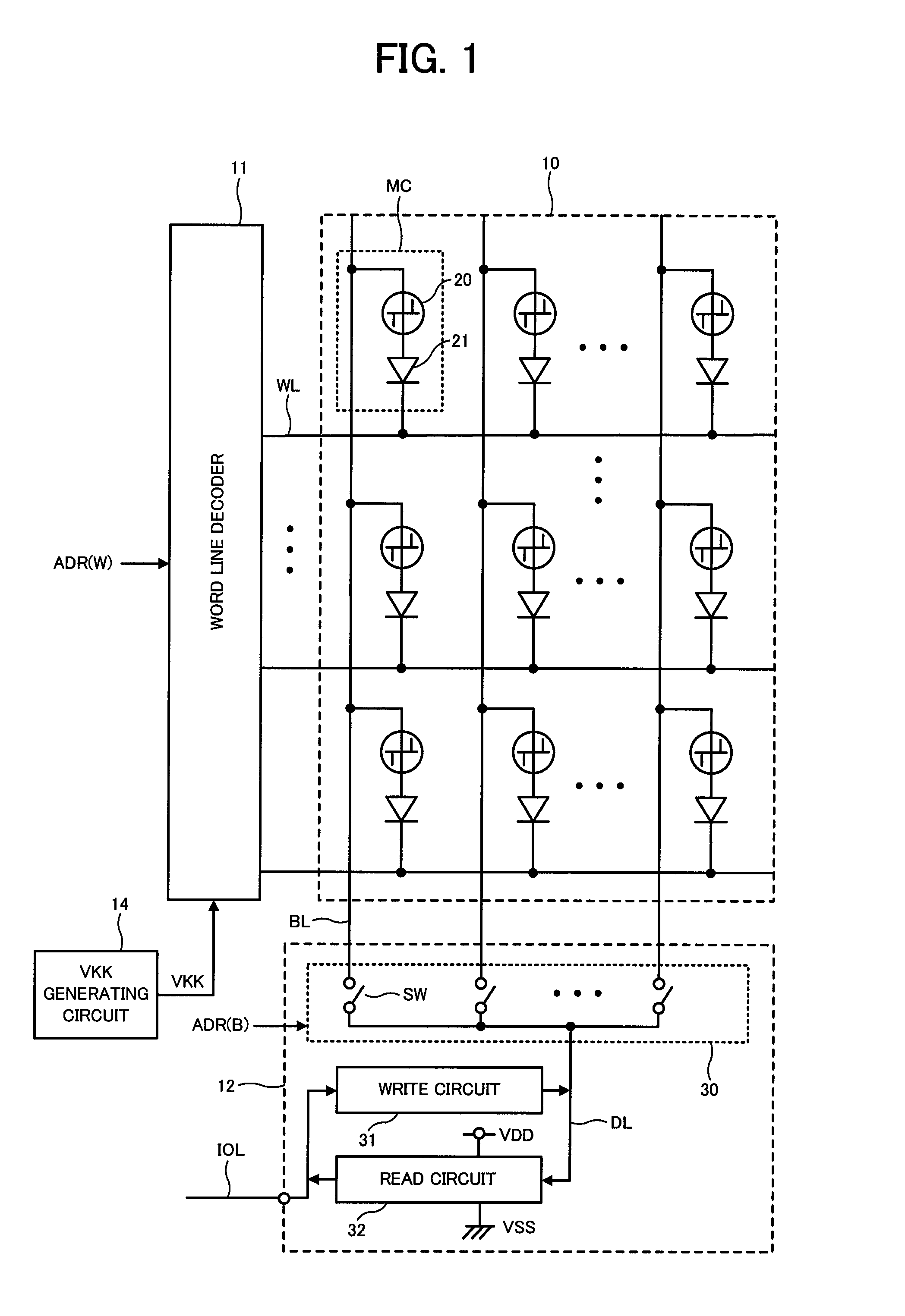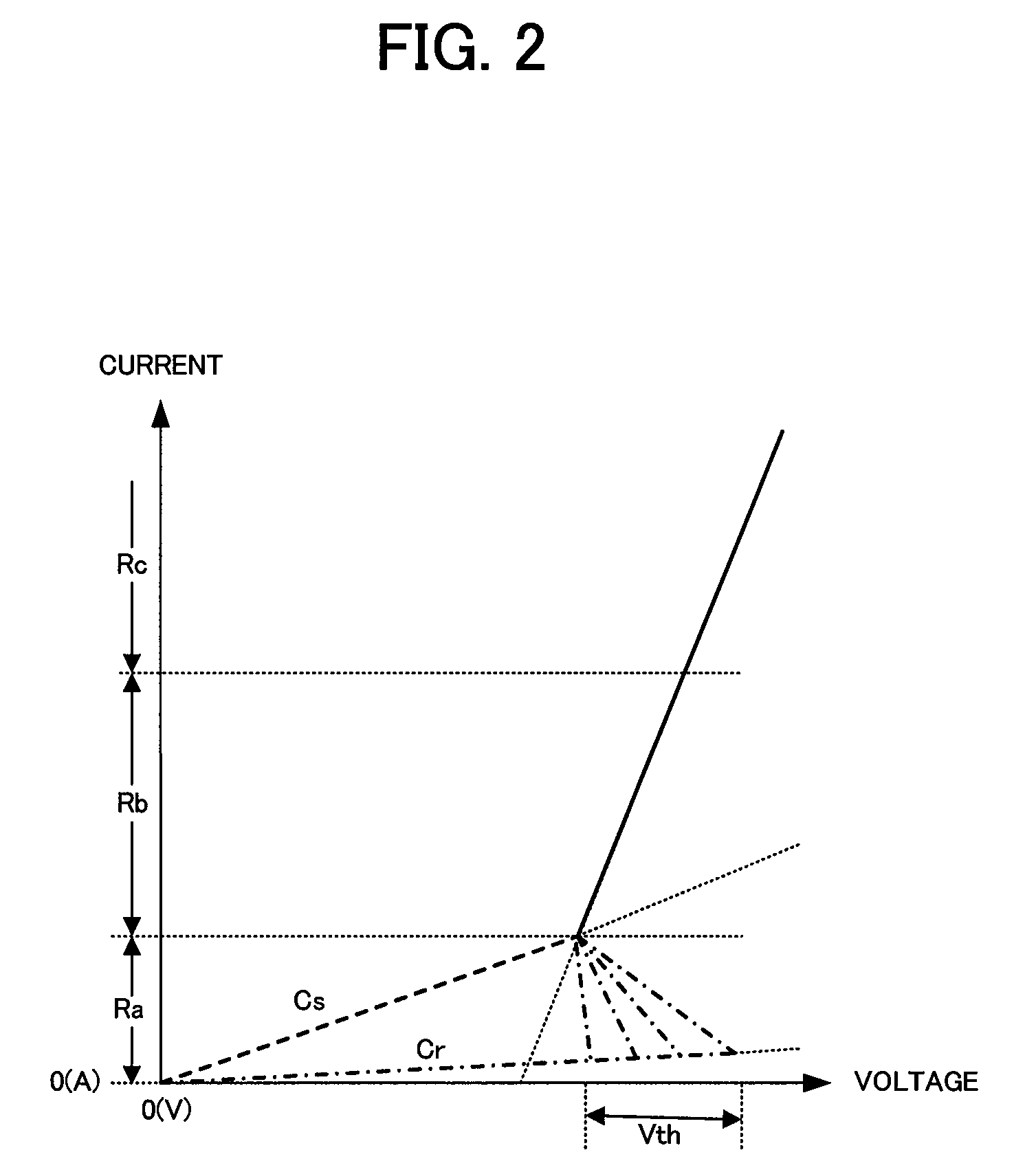Semiconductor memory device having diode cell structure
- Summary
- Abstract
- Description
- Claims
- Application Information
AI Technical Summary
Benefits of technology
Problems solved by technology
Method used
Image
Examples
Embodiment Construction
[0023]The invention will be now described herein with reference to illustrative embodiments. Those skilled in the art will recognize that many alternative embodiments can be accomplished using the teachings of the present invention and that the invention is not limited to the embodiments illustrated for explanatory purposes. In the following, the embodiments will be described in which the present invention is applied to a phase change memory device storing data in a memory cell employing the diode cell structure.
[0024]FIG. 1 is a diagram showing a basic configuration of the phase change memory device to which the present invention is applied. In FIG. 1, a memory cell array 10 includes a large number of memory cells MC arranged in a matrix, and there are provided a word line decoder 11, a bit line control circuit 12 and a VKK generating circuit 14 around the memory cell array 10. Further, the bit line control circuit 12 includes a bit line decoder 30, a write circuit 31 and a read ci...
PUM
 Login to View More
Login to View More Abstract
Description
Claims
Application Information
 Login to View More
Login to View More - R&D
- Intellectual Property
- Life Sciences
- Materials
- Tech Scout
- Unparalleled Data Quality
- Higher Quality Content
- 60% Fewer Hallucinations
Browse by: Latest US Patents, China's latest patents, Technical Efficacy Thesaurus, Application Domain, Technology Topic, Popular Technical Reports.
© 2025 PatSnap. All rights reserved.Legal|Privacy policy|Modern Slavery Act Transparency Statement|Sitemap|About US| Contact US: help@patsnap.com



